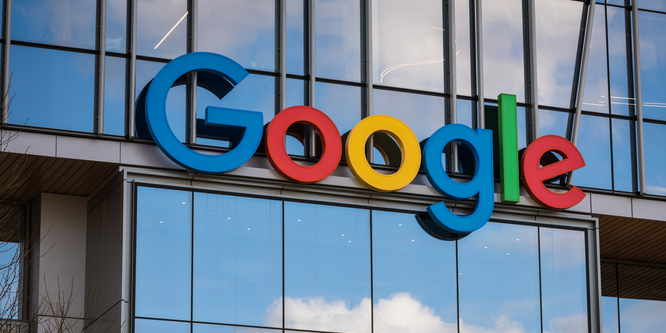
Image Source: iStock | Jimmy Anderson
Google Video Ad Controversy Could Drive Brands to Retail Media Networks
Google promises to place video advertisements on third-party websites that adhere to a particular set of standards through its Google Video Partners program. Recent research from brand analysis platform Adalytics found that the tech titan is falling short of this obligation to participating brands up to 80 percent of the time, according to a report from The Wall Street Journal.
Google maintains the findings are inaccurate.
Adalytics observed the ad placement of 1,100 brands between 2020 and 2023 through the service and found that Google placed partners’ ads on low-quality clickbait and misinformation sites, and even sites with pirated content, according to The Journal. Ads also appeared in small, muted boxes off to the side of content instead of getting prime placement. Such placements were at direct odds with the stated standards of the premium service, which promises to run ads only “on high-quality sites, before the page’s main video content, with the audio on, and that brands will only pay for ads that aren’t skipped.” One ad agency that bought ads through the program reported feeling “cheated,” and entitled to a refund.
The problem practice does not extend to videos appearing on Google-owned YouTube, only on third-party sites. Major brands such as Disney+, Macy’s and Johnson & Johnson were affected by Google’s alleged violation of the program’s standards.
This is not the first time that Google’s video advertising practices have upset advertisers, although in the past the controversy has centered around advertisements served on YouTube itself.
A few times in 2017, brands and businesses advertising on YouTube stopped advertising on the platform due to their discovering that their spots were being displayed on content that they found objectionable. In response, YouTube removed ads from millions of videos. This led to an outcry from content creators over a mass demonetization of content they dubbed the “adpocalypse.”
With brands intent on getting the best bang out of their digital marketing buck, Google might have to worry about them looking elsewhere. A report from Wakefield Research found that 64 percent of brands with marketing budgets greater than $100 million plan on increasing their spending on retail media networks this year.
Discussion Questions
DISCUSSION QUESTIONS: Do you see retailers and brands moving away from advertising through Google’s Video Partners program because of the Journal’s reporting? What can brands learn from this, and what do you see as being the most effective, safest, most productive digital advertising relationships for brands to have today?


Consumers pay to avoid these ads on most streaming sites. They make a conscious decision to accept “some amount” of video ads in order to save on the cost of their streaming media. Advertising on free media platforms is unwelcome and – candidly – toxic to the media platform…shoving too much in their audiences face boosts their results for advertisers, but causes lost audience. The true available space for quality audience of video ads is very small and the premium advertisers have to pay for it doesn’t deliver the ROI for the vast majority of advertisers. Google can crack down on “clickbait” sites, but the problem of how to get quality consumer attention in today’s media environment will persist.
a thought provoking and important discussion. Marketers are moving to private exchanges with trusted partners so Google has to demonstrate that same level of high standards. But it isn’t just Google…Amazon, Yahoo, Meta, and DSPs who access video inventory programmatically have the same challenge. There is also the issue of ID level Ad impression data coming back so marketers can feed their MTA models. Google is moiving towards being a walled garden without passing back ID level data. Personally, I would favor trusted partners and direct deals who meet two conditions…I can push an ID list for activation and I will get ID data back that, via Experian, LiveRamp, Transunion, etc. I can match back to frequent shopper, location data, credit card ID data, CRM, etc. so I know what tactics are actually working. I live in this world, and understand these challenges.
Does this breach of trust from big tech really surprise us anymore? Not that it matters all that much, but VPNs and Duck Duck Go have become standard-issue tools in my household. Time will tell, of course, if this blows over or has a meaningful impact, but as news of these failings begins to sink in, I think Retail Media networks are well-positioned to steal some share from Google.
This report could make companies more vigilant when allocating ad dollars to Google to ensure they trust the end result.
Advertisers can monitor the quality of all their ad placements to protect brand equity and performance. As retail media networks improve visibility and measurability, they will earn more trust and investment.
This practice is why most retail media networks using third-party media buying/placement and programmatic ad placement services either fail or are solely managed by the retailers themselves. The challenge has been, and continues to be, developing a meaningful content strategy and proving to endemic brands that they should reallocate funds from ‘above the line’ budgets to ‘below the line’ in-store campaigns. Retail Media Network operators need to accept the fact that their ‘network’ is not powerful enough to create ‘new’ budgets until it consistently proves that it helps “sell more stuff”.
Potentially this would seem to be dynamite, but how many companies will actually familiarize theselves with the report ? And of course there’s the TINA – There Is No Alternative – issue….just as companies have always been somewhat at the mercy of print media or TV networks in terms of ad placement (at least without paying supplmental fees to guarantee such).
As with consumers surveys, what people do – or in ths case, what they should do – and what they actually do aren’t necessarily the same thing.